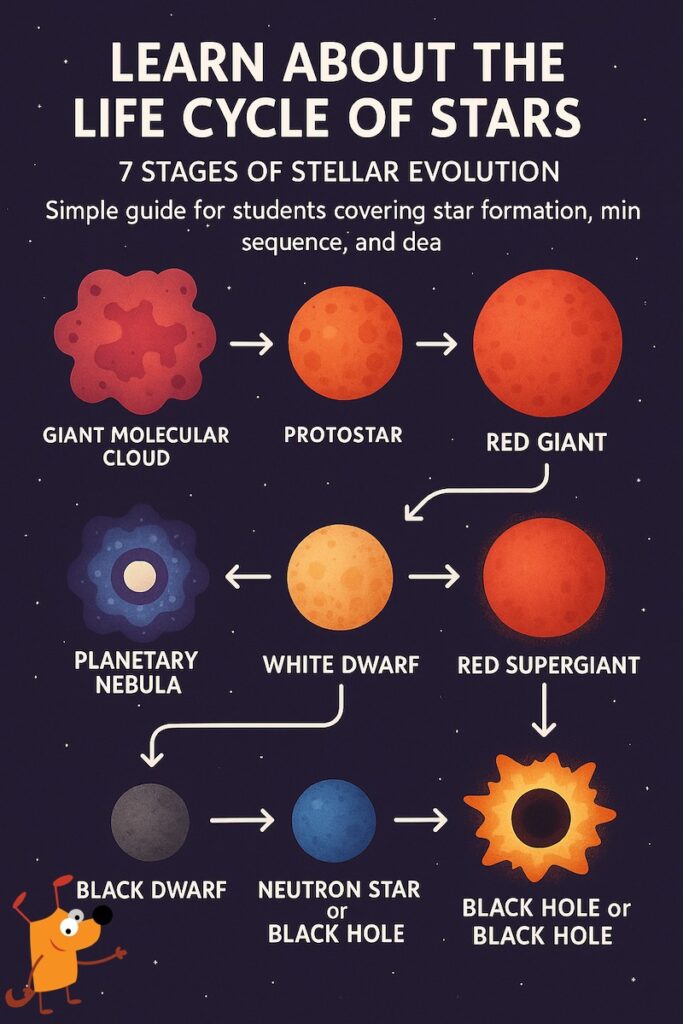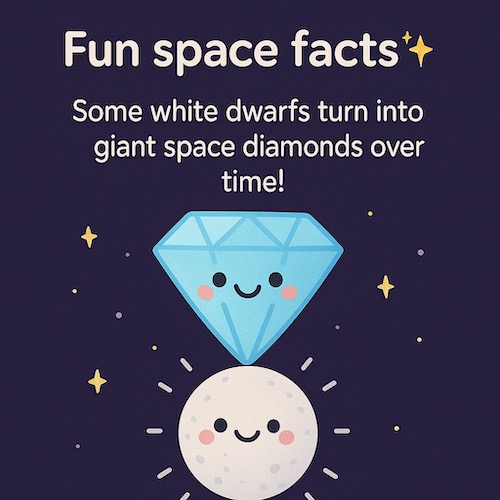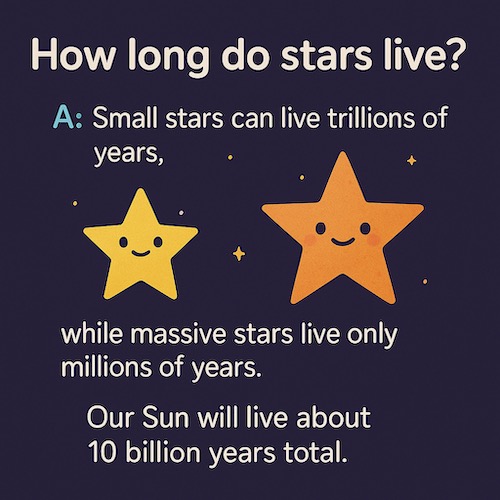Life Cycle of a Star Step by Step

Have you ever wondered how stars are born, shine for millions or even billions of years, and eventually meet their end? The life cycle of a star is one of the most fascinating processes in our universe, full of cosmic fireworks, dramatic changes, and even the creation of elements that make up our world!
The life cycle of a star depends mostly on its size: small stars like our Sun have long, quiet lives, while massive stars burn bright and fast before going out with a bang.
What Are Stars?
Have you ever looked up at the night sky and wondered about those twinkling lights? Those are stars! Stars are giant balls of hot gas that shine brightly in space. Just like you have a life cycle – from being born as a baby to growing up – stars also have their own amazing life cycle!
The life cycle of stars is the journey that every star takes from birth to death. This process takes billions of years – much longer than human life! The stages of a star are fascinating and show us how our universe works.
The 7 Stages of a Star’s Life
Every star, whether it’s small like a red dwarf or massive like our Sun, goes through these seven amazing stages. Think of it like a star’s biography!
Stars go through different stages depending on their size. Here’s how it works:
1. Giant Gas Cloud (Nebula)
Our star’s story begins in a huge cloud of gas and dust floating in space, called a nebula. These clouds are mostly made of hydrogen – the simplest element in the universe. The cloud is very cold and can be thousands of times bigger than our entire solar system!
2. Protostar (Baby Star)
When the gas particles in the cloud start bumping into each other more and more, gravity pulls them together and they create heat. This forms a warm clump called a protostar – basically a baby star! It’s like when you rub your hands together really fast and they get warm
3. T-Tauri Star (Toddler Star)
The T-Tauri phase is like when a star is a toddler. The star stops growing bigger and starts releasing lots of energy, but it’s still not hot enough in the center for the special reaction that makes stars shine. This phase lasts about 100 million years!
4. Main Sequence Star (Adult Star)
Now our star is all grown up! In the main sequence phase, the star’s core gets hot enough for nuclear fusion to begin. This is when hydrogen atoms smash together to make helium atoms, releasing enormous amounts of energy. Our Sun is in this stage right now!
5. Red Giant (Elderly Star)
When the star starts running out of hydrogen fuel in its core, it begins to change. The star expands and becomes much bigger, but its surface gets cooler, making it look red instead of yellow. That’s why we call it a red giant!
- When hydrogen runs out, the star expands and cools, turning into a red giant (for small/medium stars) or a red supergiant (for massive stars).
- Our Sun will become a red giant in about 5 billion years!
6. Fusion of Heavier Elements
As the star continues to age, it starts fusing heavier and heavier elements in its core. First helium, then carbon, then oxygen, and so on. It’s like a cosmic kitchen making different ingredients! But when the star tries to fuse iron, something dramatic happens…
7. Final Fate: Two Different Endings
The final stage depends on how massive the star is. It’s like having two different endings to the same story!
For Massive Stars: Supernova!
Really big stars (more than 8 times heavier than our Sun) explode in a spectacular supernova – one of the most powerful explosions in the universe! For a few weeks, a single supernova can shine brighter than an entire galaxy with billions of stars
For Smaller Stars: White Dwarf
Stars like our Sun (and smaller) become white dwarfs – small, hot, white stars about the size of Earth but containing most of the original star’s mass. They slowly cool down over trillions of years.

Low Mass Star Life Cycle vs. High Mass Star Life Cycle
| Low-Mass Star (Like the Sun) | High-Mass Star (10x+ Sun’s Mass) |
|---|---|
| Nebula → Protostar → Main Sequence → Red Giant → White Dwarf | Nebula → Protostar → Main Sequence → Red Supergiant → Supernova → Neutron Star/Black Hole |
| Lives billions of years | Lives millions of years |
| Ends quietly as a white dwarf | Dies in a huge explosion (supernova) |
Fun Space Facts!
✨ The gold in your jewelry came from a supernova explosion long ago!
✨ A sugar-cube-sized piece of a neutron star would weigh as much as a mountain!
✨ Some white dwarfs turn into giant space diamonds over time!

🚀 FAQ: Life cycle of a star Questions Answered!
Q: How does the life cycle of a star compare to that of a human?
A: Just like humans, stars are born, grow, change, and eventually die.
- Birth: A star forms in a nebula (like a baby in a womb).
- Childhood: The protostar phase is like a toddler growing.
- Adulthood: The main sequence is the star’s “working years” (like a human’s middle age).
- Old Age: Red giants/supergiants are like elderly stars puffing up.
- Death: Stars fade away (white dwarfs) or explode (supernovas), just like how living things eventually pass away.
Q: What’s left after a star dies?
A: Small stars become white dwarfs, while big stars leave behind neutron stars or black holes.
Q: Will the Sun explode?
A: No! The Sun isn’t big enough for a supernova. It will become a red giant, then shrink into a white dwarf.

Q: What is a nebula made of?
A: Nebulae are made of gas (mostly hydrogen and helium) and dust (tiny particles of carbon and silicon).
Q: Will our Sun become a black hole?
A: No, our Sun isn’t massive enough. In 5 billion years, it will become a red giant then shrink into a white dwarf.
Q: How long do stars live?
A: Small stars can live trillions of years, while massive stars live only millions of years. Our Sun will live about 10 billion years total.
Q: What causes a supernova?
A: When a massive star runs out of fuel, its core collapses in less than a second, causing a gigantic explosion.
Teachers can use this as a The Sun: Special star worksheet for class!
Also try Counting to the Stars Worksheet helping focuses on helping students understand and practice the concept of counting in order.
